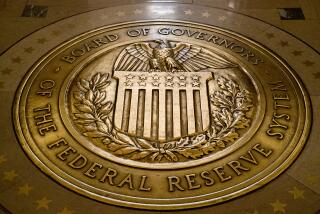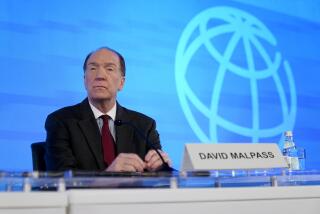Fed’s No. 2 Man Resigns, Plans to Teach Again
WASHINGTON — Manuel H. Johnson, the vice chairman of the Federal Reserve who helped steer the nation’s monetary policy for the past 3 1/2 years, announced his resignation today to return to academic life.
Johnson, 41, was appointed to the Fed by then-President Ronald Reagan on Feb. 7, 1986, and became vice chairman on Aug. 4 of that year. He said his resignation would be effective Aug. 3, at the end of his term as vice chairman. His term on the central bank would have ended Aug. 21, 2000.
“I deeply regret, but understand, Manley Johnson’s decision,” Fed Chairman Alan Greenspan said in a statement. “The vice chairman and I have been an effective team. I’ll miss him.”
“He’s done a terrific job, and we wish him well,” Deputy White House Press Secretary Alixe Glen said of Johnson. There was no immediate word on a successor.
“The Fed is losing a centrist . . . between the inflation hawks on one side and the recession worriers on the one side,” said Irwin Kellner, chief economist at Manufacturers Hanover in New York.
As Fed vice chairman, Johnson helped steer monetary policy through the last half of the nation’s longest peacetime economic expansion.
For more than a year, the central bank has sought to stem inflation by keeping a tight grip on credit without tipping the economy into a recession. The result--continued but slow economic growth--has become known as the “soft landing.”
“I am extremely proud to have played a part in the unprecedented period of sustained economic growth and low inflation that has characterized the decade of the 1980s and continues into the 1990s,” Johnson said in his letter of resignation to President Bush.
Johnson said he plans to return to George Mason University in Washington’s Virginia suburbs and assume the Koch Chair in international economics and become director of the Center for Global Market Studies.
More to Read
Inside the business of entertainment
The Wide Shot brings you news, analysis and insights on everything from streaming wars to production — and what it all means for the future.
You may occasionally receive promotional content from the Los Angeles Times.










